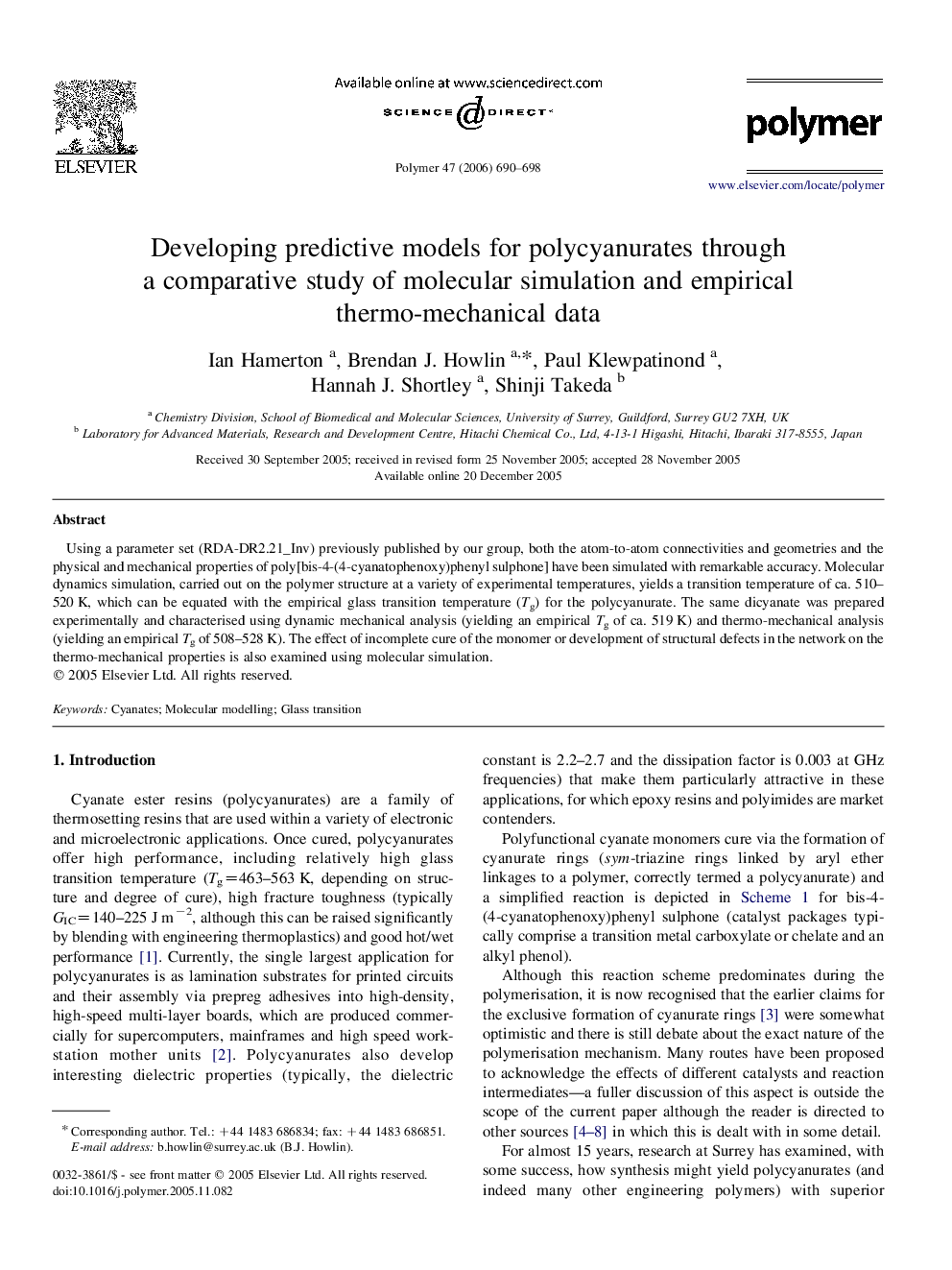| Article ID | Journal | Published Year | Pages | File Type |
|---|---|---|---|---|
| 5189420 | Polymer | 2006 | 9 Pages |
Abstract
Using a parameter set (RDA-DR2.21_Inv) previously published by our group, both the atom-to-atom connectivities and geometries and the physical and mechanical properties of poly[bis-4-(4-cyanatophenoxy)phenyl sulphone] have been simulated with remarkable accuracy. Molecular dynamics simulation, carried out on the polymer structure at a variety of experimental temperatures, yields a transition temperature of ca. 510-520Â K, which can be equated with the empirical glass transition temperature (Tg) for the polycyanurate. The same dicyanate was prepared experimentally and characterised using dynamic mechanical analysis (yielding an empirical Tg of ca. 519Â K) and thermo-mechanical analysis (yielding an empirical Tg of 508-528Â K). The effect of incomplete cure of the monomer or development of structural defects in the network on the thermo-mechanical properties is also examined using molecular simulation.
Keywords
Related Topics
Physical Sciences and Engineering
Chemistry
Organic Chemistry
Authors
Ian Hamerton, Brendan J. Howlin, Paul Klewpatinond, Hannah J. Shortley, Shinji Takeda,
